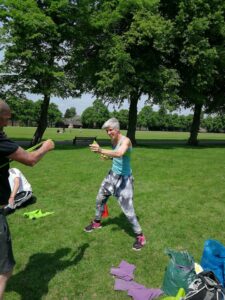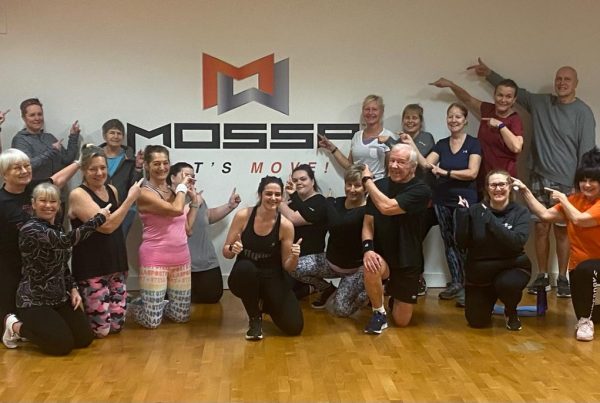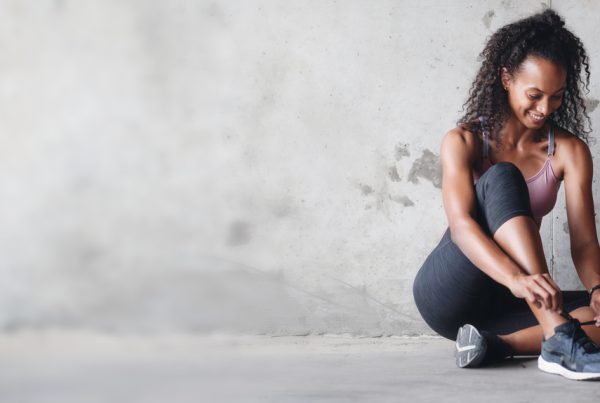Joanna Helcké shares her poignant and truly inspirational experience of running a fitness class for homeless people living on the streets.
For those of us living in a UK town of any size, it is hard to ignore the increase in homelessness and destitution on our streets. Street corner after street corner seems to house (oh the irony of this word) someone seated on cardboard, huddled under a blanket and surrounded by plastic bags: a shocking summary of a life. So often this is in stark contrast with the daily activities that the rest of us are going about as we walk past: a shopping expedition, a trip to the theatre or, quite simply, getting to and from work on the daily commute. In my local towns – Loughborough and Leicester – many of us want to help but are unsure how. A few spare coins, food, a warm drink, a chat alongside a friendly smile can only ever amount to a sticking plaster placed over a gaping wound.
Using fitness to deliver hope
It was my neighbour, consultant psychiatrist and clinical director of East Midland Mental Health Clinical Network, Dr Girish Kunigiri, who suggested earlier this year that I come along to The Bridge Homelessness to Hope (H2H) one Sunday afternoon to see the work that this Leicester-based charity does in offering up to 100 hot Sunday lunches every week, among many other things. I was interested in volunteering. The Bridge H2H was founded in August 2009, having grown from a group of people who originally helped on The Salvation Army’s soup run. Steve Owen, chair of the trust, explained to me that:
“The phrase ‘Homelessness to Hope’ was chosen to describe what we seek to achieve, believing that ‘hope’ is a key component, along with mental well-being, to progress to more fulfilled lives.”
As a specialist in pregnancy and postnatal exercise, mental well-being has always been at the very heart of what I do. Indeed, it is the very reason I retrained as a fit pro: the positive effects of exercise on my own mental well-being are so very profound. So, it was on our way back from The Bridge that day, as Dr Kunigiri and I chatted about volunteering, that he suggested that, rather than helping out with the serving of hot meals, I should use my fitness background to deliver exercise for guests of The Bridge.
As Dr Kunigiri pointed out, “Mental health problems among the homeless are prevalent, as is substance use. Keeping the body fit with regular physical activity promotes well-being, facilitates self-confidence, encourages a sense of achievement and can help manage minor mental illness such as anxiety and depression, thereby helping The Bridge’s guests on their road to recovery and independence.”
How the class works

Dr Joanna Helcke runs her fitness class for homeless people living on the streets of Leicester
I loved the idea of running a fitness class for The Bridge’s guests and it was decided that a men-only, park-based class would be trialled, with each session followed by a free meal to give us all time to chat and socialise. I am a huge believer in the power of exercising and socialising – preferably outdoors – so this format seemed ideal. The decision to make the class all-male was made because many women who use The Bridge have suffered abuse and a mixed class was felt to be unsuitable. I turned up at the very first session feeling decidedly nervous, as I had no idea who was coming, the state of their health, their level of mobility, their likes and dislikes – nothing!
To say that the first session was somewhat disjointed is a bit of an understatement. Not surprisingly, footwear and clothing were not ideal – from leather shoes and jeans to slippers and shirts – and then getting to the park took forever as I was worried about one gentleman with sore knees. Once at the park, there are fantastic outdoor gym facilities that are free to use but, with such a wide range of physical restrictions, it was a case of seeing who could realistically manage to use what.
In terms of planning, it’s very much a case of seeing who turns up each week and assessing what their restrictions and capabilities are. This means that I usually have to make on-the-spot alterations to my class plan. Many years ago, when I first started teaching, this would have made me quite anxious but now that I have been teaching for many years it doesn’t faze me. I always bring a range of gentle resistance bands with me, so that those who are unable to use the outdoor gym equipment can be given simple resistance moves with a light band.
Dealing with substance addiction in class
Keith West, director of The Bridge, estimates that substance addiction is a problem for around 80% of guests and this is very much on my radar when running the classes. Indeed, it was only in the first session I realised that people would be turning up to my classes inebriated. I quickly discarded the idea of doing any exercises that require balance, as lots of people are really rather wobbly due to alcoholism.
One guest, a recovering alcoholic, is keen to tell me all about his ongoing road to recovery: nonstop, throughout the classes while I teach. So I find myself trying to go back and forth between a conversation about pubs and alcohol while instructing everyone on the next exercise – and I’m not much of a multi-tasker!
But, ultimately, the key battle is actually getting guests to come along to the sessions. Homeless people lead chaotic lives, without the kind of structure that you or I probably take for granted, such as picking the kids up from school and getting to work on time. The Bridge is now working on a mental health action plan and providing fun, useful and engaging activities forms part of it: getting guests into a positive weekly routine is seen as one piece in the well-being jigsaw puzzle.
Why not get involved in your community?
I would certainly encourage any PTs and fitness instructors to consider using their skills to deliver fitness to homeless people – indeed, that’s why I was so keen to write this piece. We have a tool that has the potential to transform people’s mental well-being and it is a fact that depression is prevalent among the homeless.
If you, like me, find it hard to walk past a homeless person in the street and struggle to know how best to offer help, then I would suggest contacting local charities to see if they are interested in trialling a class. If you do take the plunge, be prepared to be very flexible in terms of your approach and to completely scrap your class plan and start afresh at the drop of a hat. Don’t be fazed if your class is drunk: that’s going to be part of the deal.
Consider the time you have available: I am certainly finding that the class I deliver takes up a considerable portion of my Thursdays, what with the journey there and back, people arriving late for the session, walking to the park together, doing the exercise and then following this up with a picnic and a chat. It’s a big commitment but I don’t want to rush people and, in my view, the chat and meal at the end are invaluable when it comes to lifting people’s spirits. Indeed, I have always structured my own private pregnancy and postnatal exercise classes in a similar way; bringing together exercising and socialising in my classes for the homeless has served to confirm to me that this is the way forward.
On a lighter note, probably the most surprising thing for me was to discover how much joking and banter goes on in a class for people who have unimaginably hard lives. Don’t necessarily expect doom and gloom: you might well find yourself laughing throughout your sessions, alongside people who – you would imagine – have very little to smile about in life.
A poignant final thought
I am writing these final paragraphs just minutes after teaching this week’s fitness class for the homeless. I now have two regular guests who come along every week: they bring to class bucket loads of good humour, laughter, determination and enthusiasm. Despite the pre-workout can of beer and roll-up, they really go for it in class and I know it’s not easy for them. Over the weeks, we have chatted during and after these sessions and little snippets of these conversations touch my heart, not least because they are told in such a matter of fact way. Knees don’t fare too well when you sleep on freezing cold, damp concrete under a bridge in winter, Kev was telling me today, when I asked him how the knees were surviving a set of squats.
But it was one throw-away comment he made while catching his breath after some press-ups that really got me. “You know,” he said, “I used to be the second fastest runner in my school.” To me, that simple statement serves as a powerful reminder that every homeless person we see on the street was once a child with hopes, dreams, talent and aspirations: just like you and me. After class, I asked Kev how the fitness classes make him feel and he said that, while the first week left him with muscles soreness for days on end (much to the amusement of other guests of The Bridge), he feels better for it given his depression and it offers him something to look forward to every week, rather than simply living life day by day.
As I drove back home from today’s session, I thought back to that throw-away comment – “I used to be the second fastest runner in my school” – and an uncontrollable stream of tears ran down my face. If my fitness classes for the homeless can play a part in helping to turn around just one life, then that truly would be the greatest reward ever.
Have you been inspired by Joanna’s story? Please get in touch at publish@fitpro.com to share your thoughts and experiences. We love to hear from each and every one of you.
Where to next? Did you catch Linia Patel’s article about the sunshine vitamin, vit D? Read it here.







